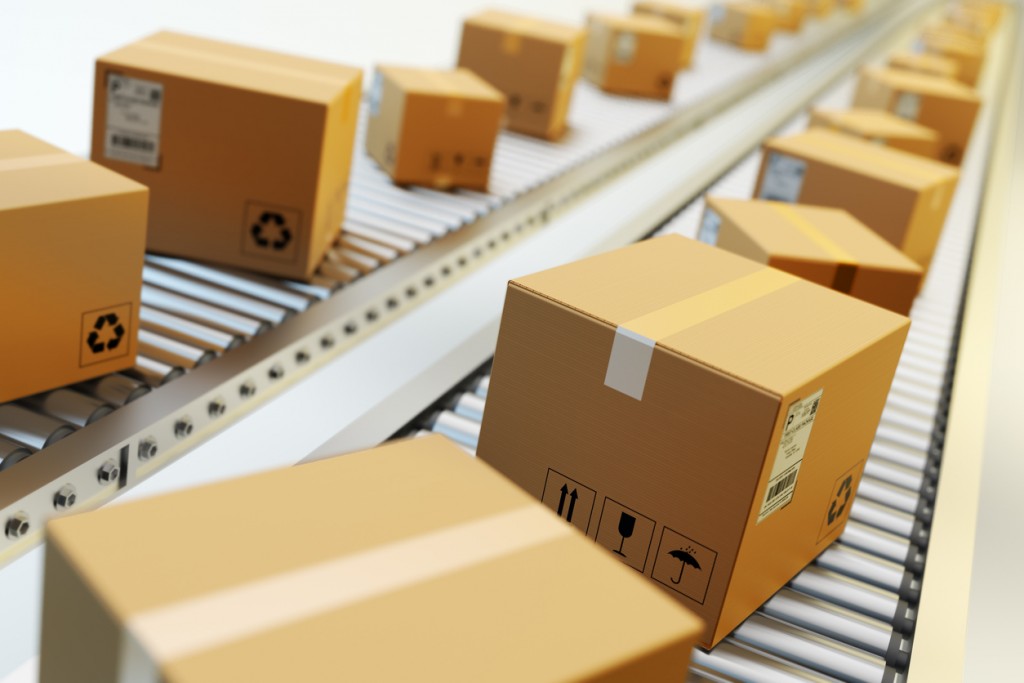 A fulfillment strategy for e-commerce refers to business strategies that get online product orders to the customers who ordered them. If steady growth in your business has been testing your ability to fill these orders and deliver them on time, it’s time to update your fulfillment strategy. Thanks to ever-evolving technology, there are many options at your disposal. All you need to do is choose the right strategy, and carefully put it into action. This can be done with the help of an e-commerce 3PL (third-party logistics) partner. Here’s what you need to know about the e-commerce fulfillment models available to you and how you can choose which is the best for you.
A fulfillment strategy for e-commerce refers to business strategies that get online product orders to the customers who ordered them. If steady growth in your business has been testing your ability to fill these orders and deliver them on time, it’s time to update your fulfillment strategy. Thanks to ever-evolving technology, there are many options at your disposal. All you need to do is choose the right strategy, and carefully put it into action. This can be done with the help of an e-commerce 3PL (third-party logistics) partner. Here’s what you need to know about the e-commerce fulfillment models available to you and how you can choose which is the best for you.
Self-Fulfillment, 3PL, or Dropshipping?
1. Self/Direct Fulfillment
With in-house self-fulfillment, your business can use a Customer Relationship Management (CRM) software to track and organize customer data. This method is often used in sales and marketing to streamline connections and make them more personal. It may make sense to handle your own fulfillment, depending on how fast your business is growing and if you are able to scale it to increased orders.
Advantages of Self/Direct Fulfillment
- Processes orders easier
- Able to efficiently store shipping and tracking information
- Creates and manages transaction documents
- Tracks inventory
- Runs reports
- Complete control over the fulfillment process
- Access to larger brands that offer wholesale purchasing
Disadvantages of Self/Direct Fulfillment
- Time-consuming, especially during peak periods
- Higher risk of a disorganized warehouse
- More issues with returns management
- Additional costs to purchase products, warehouse, and labor upfront
- Only able to sell what you have in your warehouse
2. Dropshipping
Dropshipping is when the seller does not need to maintain their own warehouse or keep any inventory on hand. Instead, they purchase the specific items their customers order from a wholesaler or manufacturer, who sends it to the customer. This case works well for businesses who sell a wide range of products from numerous brands.
Advantages of Dropshipping
- Affordable–you purchase products as orders arrive
- No need to maintain a warehouse/lower overhead costs
- Easily scalable
Disadvantages of Dropshipping
- Profit margins in the lower range as you compete with other dropshippers selling similar products
- You never see or handle the product: Less control over branding and packaging
- Fulfillment errors are out of your control, but you will be held responsible
- Can only team up with brands that have dropship capabilities
3. Outsourced Fulfillment/3PL
This third option is the most preferred for growing businesses. A 3PL provider offers solutions dealing with warehousing, packing, assembly, and distribution, all from one location. This leaves business owners to focus on sales, marketing, and customer relationships, while their outsourced e-commerce fulfillment partner deals with the entire order fulfillment process.
Advantages of Outsourced Fulfillment/3PL
- Can be integrated with existing e-commerce systems
- Fulfillment experts manage your inventory
- Optimizing transit times
- Processes returns and claims
- Provides data needed on KPIs
- Supplies warehouse and inventory space
- Includes technology and manpower
- Able to ship internationally (discounted shipping rates)
- You maintain some control over how your products are packaged and shipped
Disadvantages of Outsourced Fulfillment/3PL
- Not necessary for localized companies that can handle their own distribution with ease
- Possible additional costs for fulfillment, storage, etc. depending on the 3PL partner
- Only able to sell what is at your fulfillment center
Which Is the Right Strategy for Me?
Profitable retail companies around the world use these three options for fulfillment; however, its important that you choose the one that best suits you. The strategy you choose will determine how you scale as your business grows and will either hinder or encourage your short and long-term goals. By weighing the pros and cons mentioned above, you should be able to make an educated and thoughtful decision on which e-commerce order fulfillment strategy best suits your needs. If you can work it into your budget, a 3PL company may be your best option so you can focus on other important areas of your business.
Outsource to Our Experienced e-Commerce 3PL Services
E-commerce fulfillment centers provide amazing opportunities for businesses to improve their customer experience and loyalty. When properly implemented, the system works efficiently and quickly, providing customers with convenience and an enjoyable online shopping experience. As this happens, your 3PL will ensure your products are organized, managed, stocked, and distributed on time. With so many moving parts involved, managing your operations may be a difficult task for you to do on your own, and that’s why teaming up with a reputable 3PL company can help you.
Between dropshipping vs. order fulfillment, the latter provides more benefits and peace of mind. APS Fulfillment, Inc. strives to be the best e-commerce 3PL provider to our clients by offering the most dependable, effective e-commerce fulfillment services possible, every day. If you need help managing your e-commerce processes or believe it’s time for an upgrade, we can help. We are an experienced e-commerce order fulfillment company that can provide advice on e-commerce shipping processes and we offer our clients a variety of hands-on services. Our services include product fulfillment, direct mail marketing, fulfillment solutions, and fulfillment markets. We also use the best quality software systems to manage your warehouse, so if you’re looking for the right company, look no further than APS Fulfillment, Inc. You can contact us by e-mail at [email protected] or by phone at (954) 582-7450.
Photo Credit: iStock.com/cybrain



